Tesseract is an absolute experience. From the first half, (Tesseract □), which is a film in 3-D incorporating numerous dance-scapes where the dance shapes landscapes and soundscapes, to the second half, (Tesseract ○), which is a live performance doubled up by a live-stream film of that very same performance shot from different angles from within the dance and projected onto a transparent screen separating the dancers from the audience.
It takes time to readjust after it all ends, to re-recognise the familiar limits of one’s own and other people’s bodies, to regain control of the mundane coordinates of ordinary life, left and right, up and down. The show however, goes beyond the wowing effect of multi-sensorial immersion. It is not about disorientation, or asking the nagging first-year of philosophy classic ‘are you sure this is real?’; rather, the deep question posed from different angles (literally and metaphorically), is what is the body? Has it got a beginning? Does it end? Does anyone know?
The first sequence in the film, in a black and white set, begins with a zooming out onto a group of dancers, dressed in the same contour-blurring white, converging around a female dancer whose eyes are painted into black rectangles. They are grasping at her body: gripping her shoulders, stroking her arms and legs as though in a primitive exploration of this odd shape fallen from nowhere.
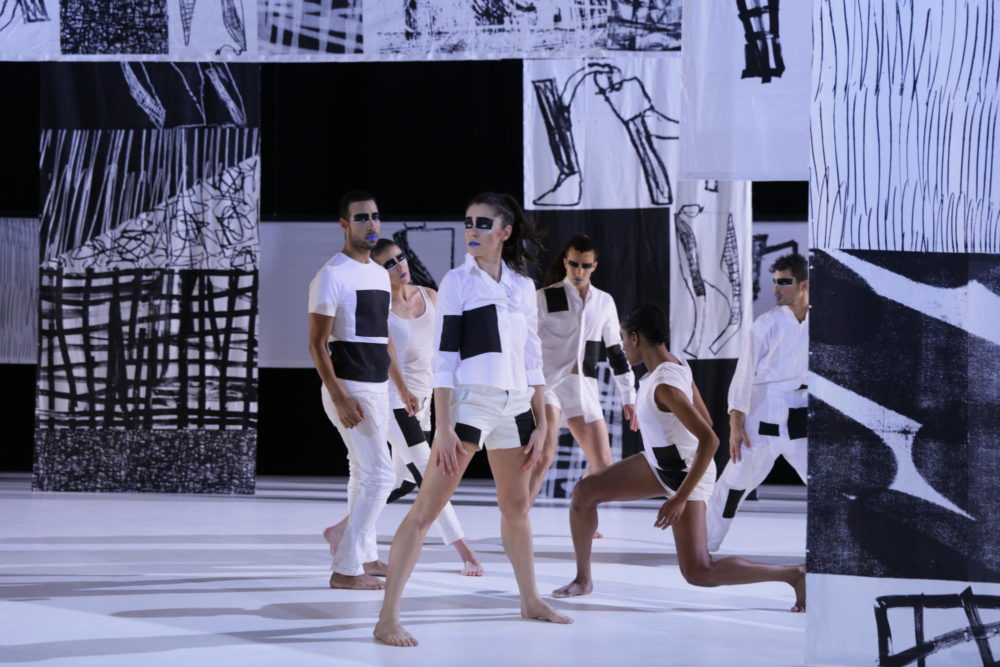
The more the group gropes at this body, the more the dancer’s body is impossible to comprehend, and the more she becomes an object of curiosity for the dancers in the film and the spectator in the armchair – especially since, with our 3-D glasses, we, the audience, feel as though we could touch her too.
Reaching out to touch and yet never being able to really touch is a leitmotiv in the show: it happens at various sequences of the film: for instance when an android Manga-looking dancer discovers the mobility of his own body, dancing in a space shrouded in smoke like a techno-angel on a cloud, and who is joined by an android-girl who tries to grasp at him to no avail. The camera’s returning repeatedly to fixate on the dancer’s amazing left hip articulation only serves to explode the shape of the human body further.
In another sequence of the film, dancers appear with protruding geometrical solids sown into their flashy – or fleshy – orange leotards which make them estranged to their own bodies. As the sequence progresses against the surrealist background of an open desert, the dancers try to reconcile themselves with their own weird shapes by squeezing into geometrical man-size cones and cubes – but no one fits.
Another sequence shows the dancers wearing bulbous jumpsuits which ripple down their lengths and make them look like elongated Teletubbies. They themselves jump, swivel and spin non-stop making it impossible to mark out any steady contours. The effect is all the more dizzying as mirror and other special effects duplicate and split the dancers on the screen.
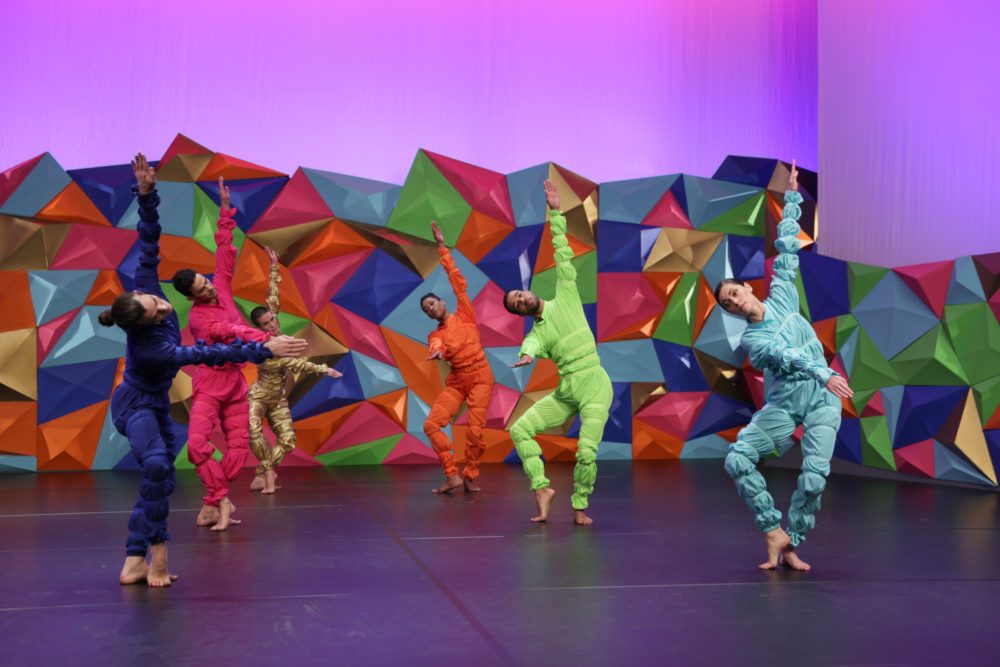
With each sequence, the message becomes louder and more disturbing: the body is the only thing we have, the only thing which is true and the only thing we can reach out to, and all the while, it is also the most fleeting, the least definable, the least possessable.
In the last sequence of the film, the most sexualised, we see the two choreographers and dancers – who met and trained with Merce Cunningham – Rashaun Mitchell and Silas Riener in groin-cloths moving on all fours in a forest of multi-coloured ropes dangling from a ceiling we cannot see. The lighting is harsh and white; the ropes which also encircle their hips like dreadlocks for the whole body, both hide and reveal curves and nooks of the body which play with a fleeting physicality. But the surrounding jungle of ropes makes their reunion impossible. The effect is that, however amorous and intense the desire for proximity is, the body remains unfathomable.

Charles Atlas, Rashaun Mitchell, and Silas Riener, TesseractThe reason why we cannot define a body, even as we reach out to grope at its contours, is that the limits of the body are part of that body – and limits are untouchable. This seems to be the idea behind the costume design for the second half of the show, the live performance in which six dancers take control of the stage in geometrical configurations, wearing transparent body-suits, made of a stiff fabric which create a protective space around their almost naked bodies.
This transparent cloak is an enhanced body around the body, creating an interstice which frames the privileged untouchable limit of the body. Creating that space, making an emptiness palpable, is in itself a technical prowess.
Tesseract in its entirety is a reflection on technology in dance: whether it is an invasion of the dancer’s space, a partner in the dance, or such a game-changer that dance can no longer be what we were used to.
The technology present in the show is first and foremost optic, beginning with the 3-D film. The media-artist Charles Atlas manipulates the special effects to give the spectator the feeling the dancers are about to topple over him, which contributes to drawing in the spectator: we are forced into playing a part in the inquiry, that is to say, into the dance.
At the heart of the show is the question of geometry. The allure and reassurance of geometrical shapes are constant safety nets thrown in at regular moments during the film and the performance, when things risk becoming too unbearably crazy. But all the time, the evolution of the dance with its recurring discovery of the incommensurable body clashes with the reassuring reminder of geometrical harmony.
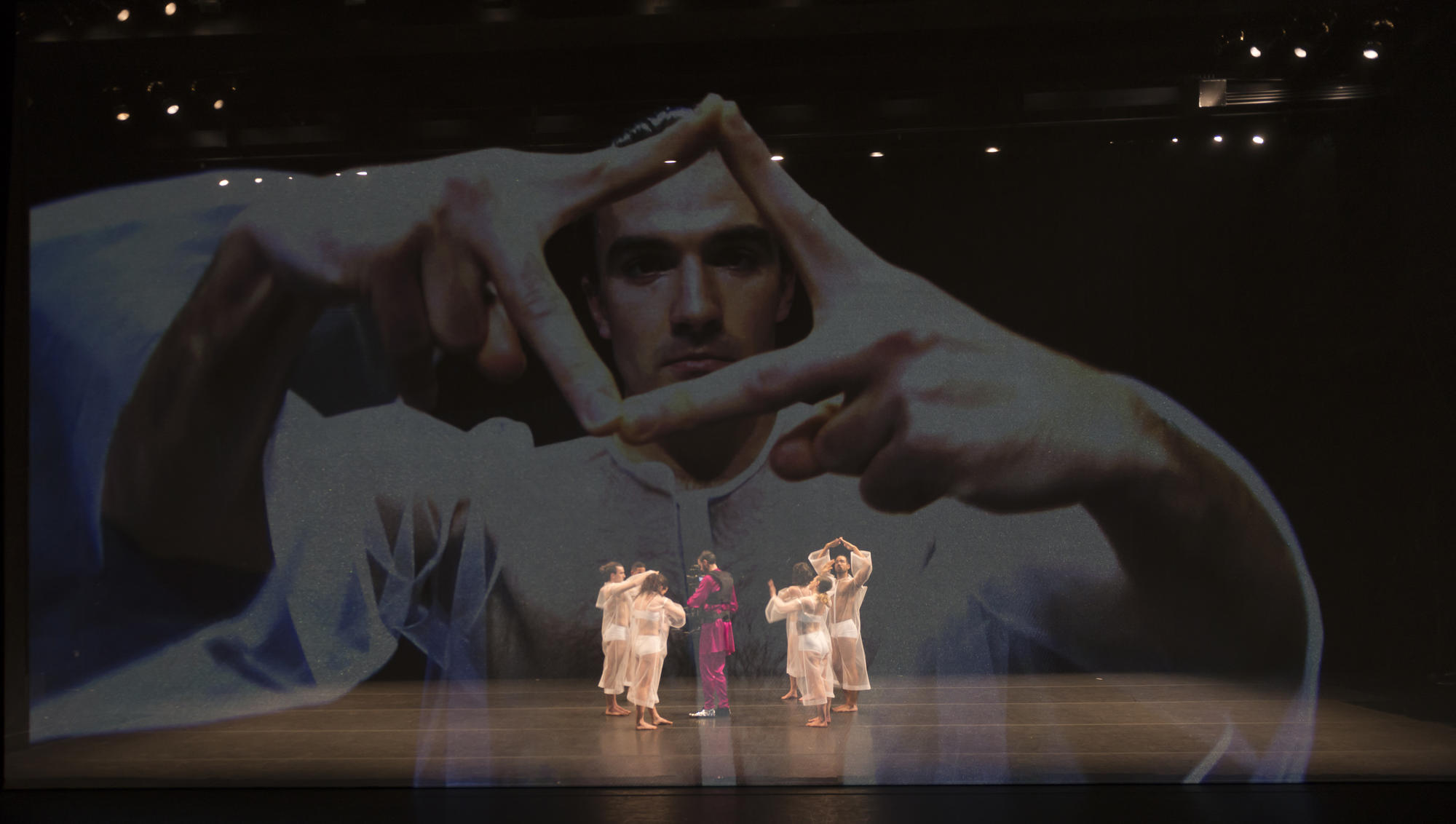
The tesseract from the show’s title refers to a geometrical figure which encapsulates that contradiction since it is a four-dimensional cube. Order meets incalculable mystery in this fourth dimension which is both the dimension of time and, with it, the incorporation of all that is inconceivable and imperceptible. The cube is queered. The straight order of a geometrical cosmos is challenged, and we humans – the dancers and the spectators – can only begin to imagine how queer cosmic order really is.
The image of a tesseract floats on the screen at the beginning of the film and is re-enacted in different ways in the show. Perhaps most spectacularly in the second half, when the dancers perform beautifully ordered arrangements, following diagonals, and parallel lines on the floor whilst at the same time, a Steadicam operator – dressed in a magician’s sparkling purple costume – explodes the straight lines, by projecting on a screen that separates the stage from the audience, oblique angles, caught from within the heat of the movement.
This live-stream is itself interspersed with a third cinematic projection on the screen, of shots taken from above, or stills which freeze a motion which, on stage has long disappeared in a rush of movement. With these optic perspectives of diagonals, obliques, obtuse angles, the tesseract is re-built out of flesh and void, driving home to the spectators that most of the time, we see nothing of what is really there.
The cube plays an important role in the recent history of ballet. Maurice Béjart (1927-2007) in 1997 famously inserted one of the greatest ballerinas of the 20th century, Sylvie Guillem, inside one giant cube.
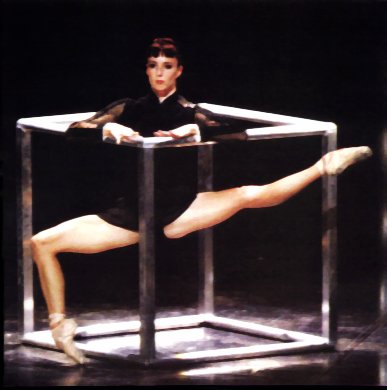
In Racine cubique Guillem, alone on stage, slithers in and out of a large cube, entering into a dialogue with the cube, which becomes a dialectical power game of almost Hegelian proportions. The question there, is who is more square, more ordered. The sheer anatomical perfection of Guillem is tested against the cube: who has the straightest edges, the flattest sides, the rightest angle? The choreography is an ode to Pythagoras, to right angles and to the beauty of the human body, governed by eternal laws of proportion. The special relation of the body with the hypotenuse is celebrated as Guillem flattens herself into one diagonal, to then detach herself completely from the cube as if to escape it. But she ultimately returns inside, since the cube contains all the multitudes a body needs.
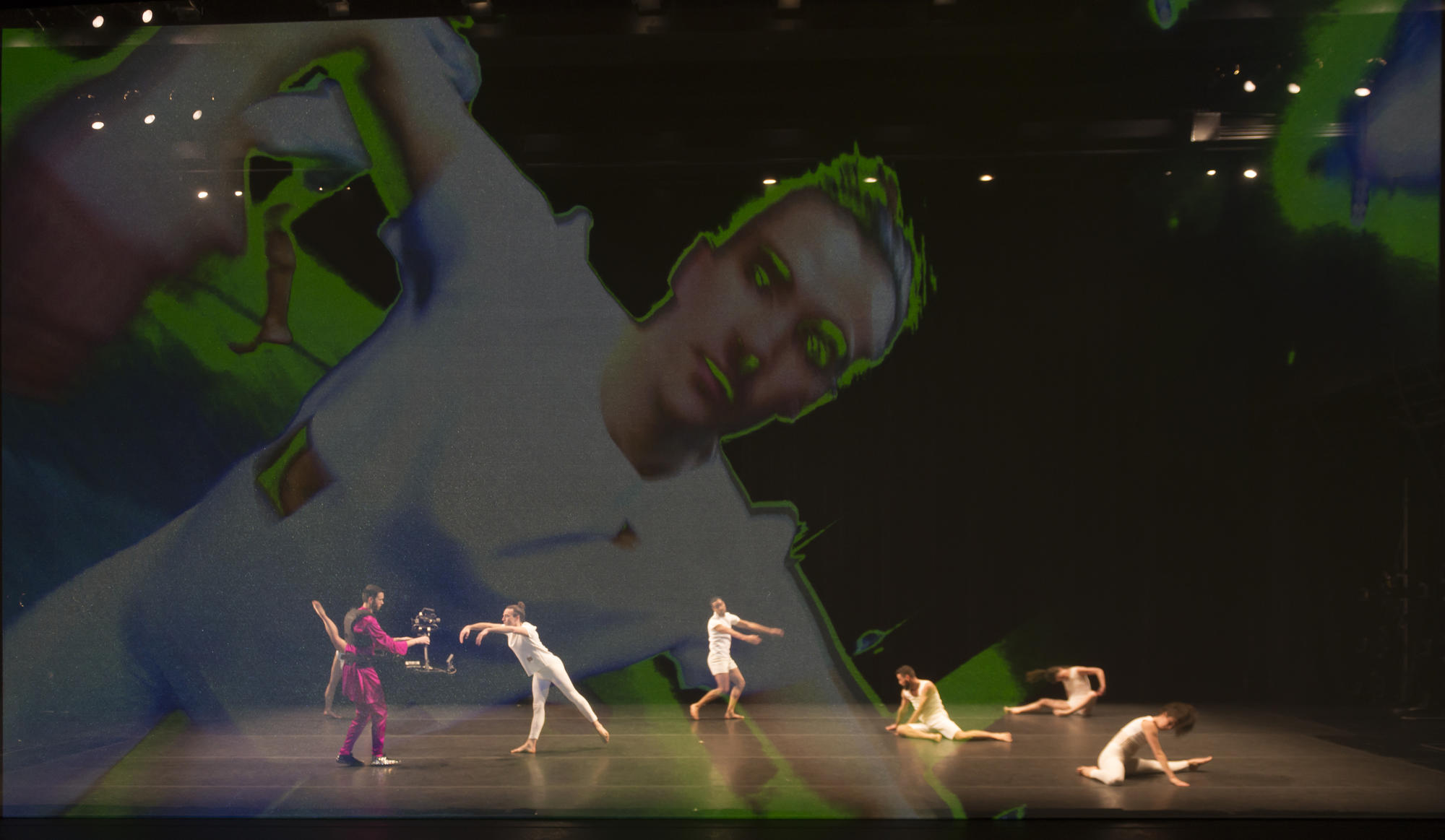
The creators of Tesseract are unsatisfied with the cube. Where Béjart created a dialogue, Atlas, Mitchell and Riener denounce a barrier of non-communication. The body does not belong inside the cube, it does not fit in it. It is the reality outside the cube where the multitudes lie. That is where the bold, the adventurous, the explorer-dancer must go in his quest to understand the body.
There is a fascination in the work with the infinite number of galaxies and stars as the screen often pauses on the image of innumerable twinkling stars in an infinite night. The body as we know it – or think we know it – cannot move to the stars on its own. But it can use and invent special effects, technological enhancements to come, not to alter itself, but to realise its deficiencies, all the better to welcome in new worlds.
Reviews at the Barbican Theatre on 2nd March 2019


